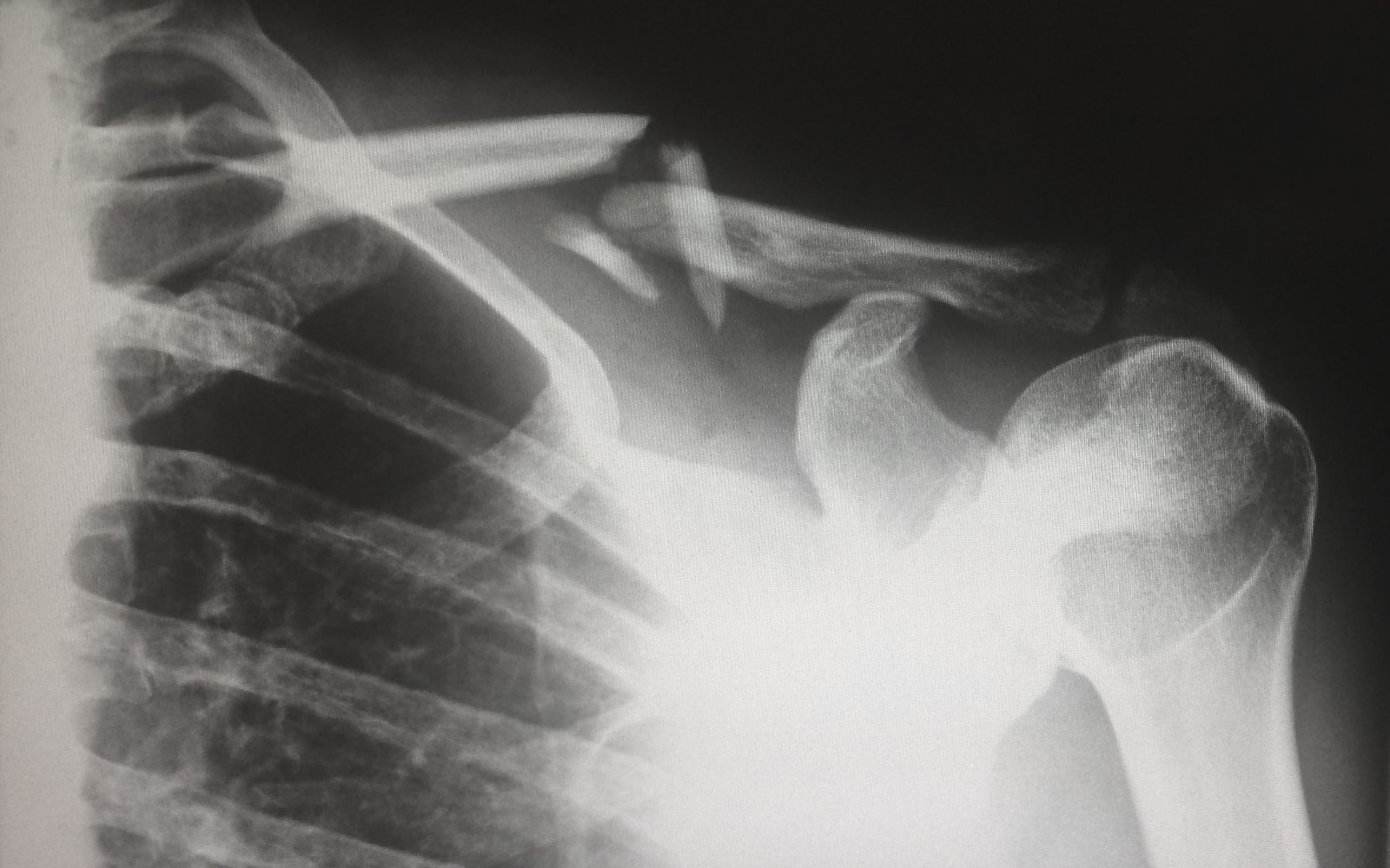Have you ever heard of tophus? If not, you're not alone. Tophus is a term often associated with gout, a type of arthritis that affects millions of people worldwide. But what exactly is tophus? In simple terms, it is a deposit of uric acid crystals that forms under the skin and soft tissues. These small, whitish nodules can be quite painful and are usually found in joints, tendons, and areas around the joints. While tophus may seem unfamiliar to many, understanding its nature is crucial in managing and treating gout effectively.
What is Tophus?
Tophus is a condition that is characterized by the buildup of uric acid crystals in a particular area of the body, typically in and around the joints. These crystal deposits are known as tophi, and they can lead to various symptoms and complications if left untreated. Tophus is most commonly associated with the condition known as gout, which is caused by high levels of uric acid in the blood. However, tophus can also occur in individuals who do not have gout.
Definition
Definition of Tophus
Tophus is defined as a deposit or accumulation of urate crystals in the soft tissues of the body. These crystals form when there is an excess of uric acid in the blood, leading to the precipitation of urate crystals in various parts of the body. Tophi often develop in and around the joints, such as the fingers, toes, knees, and elbows, but they can also occur in other locations, including the ears and eyelids.
Tophus in Medical Terminology
In medical terminology, the term “tophus” refers to a localized deposit of monosodium urate crystals. These crystals are composed of uric acid, a waste product that is produced when the body breaks down purines, which are found in certain foods. When the body is unable to effectively eliminate uric acid, it can accumulate and form crystals, leading to the development of tophi.

Characteristics
Physical Appearance
Tophi have a distinctive physical appearance that sets them apart from other skin conditions. They typically appear as firm, yellowish-white nodules that can range in size from small pea-like bumps to larger, more visible deposits. The tophi may be surrounded by red, swollen skin and may feel tender to the touch. Over time, the tophi can grow and become more pronounced, causing further discomfort and interfering with joint function.
Composition
The composition of tophi consists primarily of urate crystals. These crystals are formed when there is an excess of uric acid in the blood. Uric acid is normally dissolved in the blood and excreted through the kidneys. However, when there is an imbalance in the production and elimination of uric acid, it can start to accumulate and form crystals, which can then lead to the development of tophi.
Growth and Development
Tophi can develop gradually over time, often as a result of long-term elevated levels of uric acid in the blood. Initially, the tophi may be small and barely noticeable. However, as the urate crystals continue to accumulate, the tophi can increase in size and become more visible. The growth and development of tophi can vary among individuals, and factors such as the severity of the underlying condition and the effectiveness of treatment can influence their progression.
Causes
Uric Acid Buildup
The primary cause of tophus is the buildup of uric acid in the body. Uric acid is a waste product that is produced when the body breaks down purines, which are substances found in certain foods and beverages. In a healthy individual, uric acid is dissolved in the blood and excreted through the kidneys. However, in individuals with an imbalance in uric acid production and elimination, uric acid can accumulate and form crystals, leading to the development of tophi.
Hyperuricemia
Tophus is often associated with the condition known as hyperuricemia, which refers to abnormally high levels of uric acid in the blood. Hyperuricemia can result from overproduction of uric acid, decreased excretion of uric acid by the kidneys, or a combination of both. Hyperuricemia is a common precursor to gout, a form of arthritis that is characterized by acute attacks of joint inflammation.
Gout
Gout is a type of arthritis that is caused by the deposition of urate crystals in the joints. It is often characterized by sudden and severe attacks of pain, swelling, and redness in the affected joint. Over time, if left untreated, gout can progress to chronic gouty arthritis and the development of tophi. While not everyone with gout will develop tophi, individuals with recurrent gout attacks are at an increased risk.
Risk Factors
Age
Age is a significant risk factor for developing tophi. As individuals age, their kidneys may become less efficient at eliminating uric acid from the body, leading to an increased risk of uric acid buildup and the development of tophi. The risk of developing tophi tends to increase after the age of 40, and the prevalence of tophus is higher in older adults.
Gender
Gender can also play a role in the development of tophi. Men are more likely to develop gout and tophi compared to women, particularly at a younger age. This gender discrepancy is partly attributed to the hormonal differences between men and women, with estrogen having a protective effect against uric acid accumulation.
Family History
Having a family history of gout or tophus increases the risk of developing these conditions. There is a genetic component to gout, and individuals who have relatives with gout or tophi are more likely to develop them themselves. This suggests that certain genetic factors contribute to the underlying metabolic abnormalities that lead to uric acid accumulation.
Dietary Choices
Dietary choices can influence the risk of developing tophi. Consuming foods and beverages that are high in purines, such as red meat, organ meats, shellfish, and sugary drinks, can increase the production of uric acid in the body. Additionally, alcohol, particularly beer, has been associated with an increased risk of gout and tophus development. Adopting a balanced diet and limiting purine-rich foods and beverages can help reduce the risk of tophus.
Medical Conditions
Certain medical conditions are associated with an increased risk of tophus. These include conditions such as obesity, hypertension, diabetes, and kidney disease. These conditions can disrupt the normal metabolism and excretion of uric acid, leading to its accumulation in the body. Proper management and control of these underlying medical conditions can help reduce the risk of developing tophi.
Symptoms
Pain
Pain is one of the most prominent symptoms associated with tophus. The presence of tophi can lead to intermittent or constant pain in the affected joints or areas where the tophi are located. The pain may be mild to severe and can be described as sharp, burning, or throbbing. The intensity of the pain can vary depending on the size and location of the tophi.
Swelling and Inflammation
Tophi can cause localized swelling and inflammation. The affected area may appear red, warm to the touch, and swollen. The swelling and inflammation are caused by the body's immune response to the presence of urate crystals, which are perceived as foreign invaders. Inflammatory markers in the blood may also be elevated, indicating the presence of an inflammatory response.
Rash or Skin Dimpling
In some cases, tophi may cause changes in the skin's appearance. The skin overlying the tophi may develop a rash or become dimpled, giving it a cottage cheese-like appearance. These changes are a result of the infiltration of urate crystals into the skin and underlying tissues. The texture of the skin may feel rough or gritty when the tophi are palpated.
Joint Stiffness
Tophi can lead to joint stiffness, especially when they develop in or around the joints. The stiffness may make it difficult to move the affected joint, and it can be particularly noticeable in the mornings or after prolonged periods of inactivity. The presence of tophi in the joint can interfere with the joint's normal range of motion and contribute to joint stiffness.
Limited Mobility
As tophi increase in size and number, they can potentially restrict joint movement and limit mobility. The development of tophi can cause joint deformities and lead to functional impairment. This limitation in mobility can significantly impact an individual's quality of life, making it challenging to perform everyday tasks and activities.

Diagnosis
Physical Examination
The diagnosis of tophus typically begins with a thorough physical examination. A healthcare professional will examine the affected area, looking for signs of tophi, such as firm nodules, redness, swelling, and tenderness. The joints may also be assessed for signs of inflammation and limited range of motion. The presence of tophi, along with a history of gout or risk factors for tophus, can provide important clues for diagnosis.
Imaging Tests
Imaging tests, such as X-rays or ultrasound, may be used to confirm the presence of tophi and assess the extent of joint involvement. These imaging modalities can help visualize the size, location, and characteristics of the tophi. X-rays can also detect signs of joint damage, such as erosions or joint space narrowing, which can occur as a result of chronic inflammation and tophus formation.
Joint Fluid Analysis
Analysis of joint fluid can provide valuable information in the diagnosis of tophus. A procedure called joint aspiration or arthrocentesis may be performed to collect a sample of the fluid from the affected joint. The collected fluid is then examined under a microscope to look for the presence of urate crystals. The identification of urate crystals in the joint fluid confirms the diagnosis of tophus.
Blood Tests
Blood tests can be used to measure the levels of uric acid in the blood. Elevated levels of uric acid (hyperuricemia) are often seen in individuals with tophus and can support the diagnosis. However, it is important to note that the presence of hyperuricemia alone does not necessarily indicate the presence of tophus, as some individuals with high uric acid levels may not develop tophi.
Complications
Joint Damage
Untreated tophus can lead to joint damage over time. The presence of tophi can cause chronic inflammation in the affected joints, which can result in the erosion of joint cartilage and bone. This can lead to joint deformities, decreased joint function, and an increased risk of recurrent gout attacks. The severity of joint damage can vary depending on factors such as the duration and intensity of inflammation.
Chronic Pain
Tophi can cause chronic pain in the affected joints and surrounding areas. The persistent presence of urate crystals and ongoing inflammation can lead to ongoing pain and discomfort. Chronic pain can significantly impact an individual's quality of life and daily activities, affecting their ability to work, exercise, and engage in hobbies and social activities.
Infection
In some cases, tophi can become infected, leading to the development of a secondary infection. The presence of tophi provides an optimal environment for bacteria to multiply, especially if the skin overlying the tophi becomes compromised or injured. Infection can cause additional pain, swelling, and redness in the affected area, and may require prompt medical intervention to prevent further complications.

Treatment
Medications
Medications are commonly used in the treatment of tophus, with the goals of relieving pain, reducing inflammation, and preventing further crystal accumulation. Nonsteroidal anti-inflammatory drugs (NSAIDs) are often prescribed to manage pain and inflammation associated with tophus. Colchicine is another medication that can help reduce the frequency and severity of gout attacks and tophus formation. In cases where tophi are large or causing significant symptoms, medications that lower uric acid levels may be prescribed, such as allopurinol or febuxostat.
Lifestyle Changes
Lifestyle changes can play a crucial role in managing tophus and preventing future flare-ups. Maintaining a healthy weight through diet and exercise can help reduce the risk of gout and tophi development. Avoiding foods and beverages that are high in purines, limiting alcohol consumption, and staying well-hydrated can also help lower uric acid levels in the body. Regular exercise and maintaining a balanced diet can also support overall joint health.
Surgery
In some cases, surgical intervention may be required to manage tophi. Surgical options may include draining or removing the tophi to relieve pain and restore joint function. Joint replacement surgery may be considered in cases where tophi have caused significant joint damage and functional impairment. Surgery is typically reserved for severe cases of tophus that do not respond to more conservative treatment approaches.
Alternative Therapies
Some individuals may seek alternative therapies or complementary treatments to manage tophus symptoms. These can include techniques such as acupuncture, herbal supplements, or dietary modifications. While these therapies may offer relief for some individuals, it is important to discuss them with a healthcare professional to ensure they are safe and effective, and to avoid potential interactions with prescribed medications.
Prevention
While tophus may not be entirely preventable, there are measures that can be taken to reduce the risk of its development and manage its symptoms:
-
Maintain a healthy lifestyle: By adopting a balanced diet, engaging in regular exercise, and maintaining a healthy weight, you can help prevent the accumulation of uric acid and reduce the risk of tophus formation.
-
Stay hydrated: Drinking plenty of water and other fluids can help maintain proper kidney function and promote the excretion of uric acid, reducing the risk of uric acid buildup.
-
Avoid trigger foods: Limit your consumption of purine-rich foods, such as red meat, organ meats, shellfish, and sugary drinks, as they can increase uric acid production. Moderate alcohol consumption, particularly beer, as it can also contribute to elevated uric acid levels.
-
Manage underlying medical conditions: Properly managing conditions such as hypertension, diabetes, and kidney disease can help reduce the risk of tophus development. This may involve taking prescribed medications, following a recommended treatment plan, and regularly monitoring health parameters.
-
Follow prescribed treatments: If you have gout or are at risk of developing tophus, it is essential to follow the treatment plan outlined by your healthcare professional. This may involve taking medications as prescribed, attending regular check-ups, and making necessary lifestyle changes to manage your condition effectively.

Conclusion
In conclusion, tophus is a condition characterized by the accumulation of uric acid crystals, known as tophi, in and around the joints. It is most commonly seen in individuals with gout or those with hyperuricemia. Tophi can cause various symptoms, including pain, swelling, joint stiffness, and limited mobility. If left untreated, tophus can lead to complications such as joint damage, chronic pain, and infection. However, with proper diagnosis and treatment, including medications, lifestyle changes, and, in some cases, surgery, the symptoms and progression of tophus can be effectively managed. By understanding the risk factors and taking preventive measures, individuals can reduce their likelihood of developing tophus and improve their overall joint health. It is essential to consult with a healthcare professional for an accurate diagnosis, appropriate treatment, and ongoing support in managing this condition.
